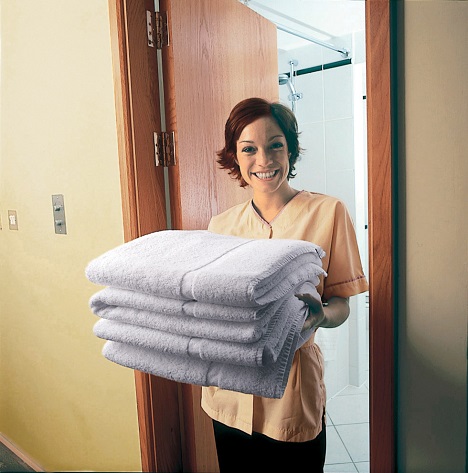Laundry water saving tips by Diversey Care

Diversey Care offers tips for reducing water use in your On-Premises Laundry
By Keith Wootton
The high cost of water, effluent and energy is forcing hotels to see how they can improve the sustainability of their on-premises-laundry operations while maintaining wash quality and hygiene standards. Around 80 per cent of energy consumed in a laundry is used to heat water to the required temperature during the wash phase. It follows that reducing overall water consumption will lead to lower energy costs.
Across industry there is an accepted hierarchy of water management that broadly seeks to first conserve, then reuse and finally recycle. It makes sense to look at conservation first because it requires little or no investment yet often gives the greatest returns. Efforts should focus on eliminating overuse and misuse of water as well as mechanical defects of equipment and infrastructure. This can be as simple as repairing leaking pipework and valves but should include ensuring the washing machine is working correctly and its settings match equipment and chemical manufacturers’ specifications. It pays to have machines regularly by suitably qualified technicians. Staff using the laundry should be trained to use equipment properly and to look out for leaks. Leak detectors and alarms can be installed to provide additional assurance.
Water is also conserved by adopting laundry best-practice to prevent wastage and rewash. This will include factors such as sorting linen by classification and soiling level, correct loading of machines, how the linen is handled and making sure that cycles are completed once started. Room care staff should use the correct tools and processes to avoid the misuse of linen that can place additional burdens on the laundry.
It is often possible to reduce water and energy consumption by changing laundry processes. For example, modern fabric care products deliver effective results at lower temperatures and may be an option for many, if not all, laundry tasks. Other areas where savings are possible can include changing the spin speed during prewash to alter water retention, replacing a final rinse with a chemical neutralisation step, or optimising the settings and use of driers.
The second stage of a water management hierarchy is to identify opportunities for reuse. Generally this involves using water that has already served a primary function but remains of good enough quality to be used for a lower grade secondary function. Examples include recovering final rinse water for reuse during prewash, reusing water rejected by softeners, and fitting a heat exchanger to waste circuits to heat incoming water.
The final step is to recycle waste water and reuse it as potable water after suitable treatment (eg filtration or chemical) with the best available technology. There is always a balance between sustainability goals and available budgets. It is usually advisable to implement conservation and reuse initiatives before considering recycling because they are simpler and less expensive.
As with any project it is important to keep records to assess the improvements that have been made. A water metre in the laundry will provide information that can be used in conjunction with energy and productivity data to benchmark and track performance. It is often useful to ask a credible partner to undertake a water audit to include a water and energy mass balance.
August 11th 2016
















